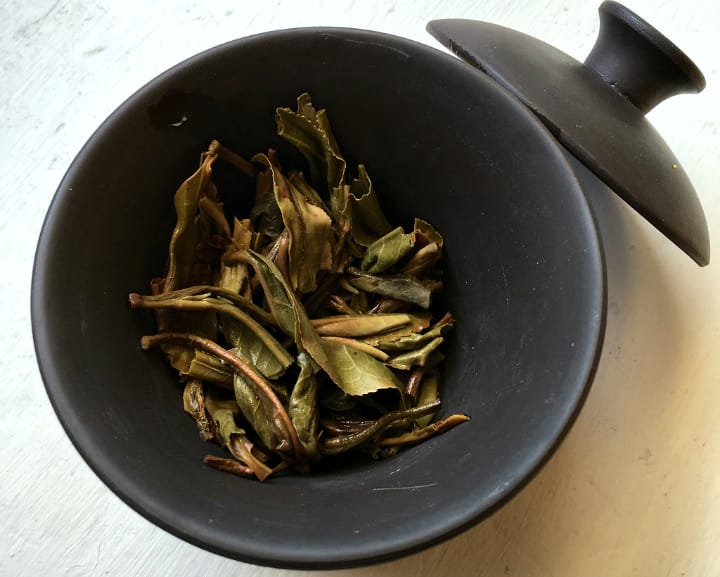Your Instagram feed is blowing up with matcha latte art. Hmm … seems like a lot of work.
You see those funny little whisks everywhere along side small short cups. Hmm…you kind of like your Hello Kitty mug.
Matcha seems to be the tea of the moment but it may not be your cup of tea. You don’t want quite that much caffeine. You want something to sip a little slower while you cuddle up with a good book. You want to get as much from your tea buck as you can for both body and spirit.
How about jumping on the pu-erh bandwagon instead?
Pu-erh (or puer or pu erh) tea is a very special tea from China that has all the health benefits you expect from tea plus a few you may never have even thought of before. While you may not put it in your chia pudding, pu-erh tea can comes in a wide variety of options to meet your adventurous taste.
Even if you have heard about this delicious black tea before (maybe you’ve been to one of my tea classes?) I bet you’ll still learn a thing or two with these 10 facts on pu-erh tea for beginners.
- In China if you want pu-erh you should ask for black tea or dark tea. What we call black tea in the US they refer to as red tea.
- There are two basic varieties of pu-erh tea: sheng pu-erh (also called raw or green pu-erh) and shou pu-erh (ripened, cooked or black type). According to the book Modern Tea, sheng is the more sought after variety. It is aged and fermented naturally like a fine wine. Shou processing, which was developed to meet growing demand, uses water and heat to speed up the aging process.
- Fermentation makes it healthier. With that added fermentation step, pu-erh makes a great natural probiotic.
- You get more bang for your buck with multiple steeps. Brewing tea in a traditional Eastern style will allow you to steep the same tea leaves over and over again. I love Misty Peak pu-erh tea in my gaiwan because I know I can steep the same leaves four to six times. I use boiling water and start with a short steep, around 45 seconds. After that I let it steep about 15 seconds longer each time.
- Like champagne your best pu-erh only comes from one place. Real pu-erh tea comes from Yunnan province in and around the county of Pu-erh.
- According to traditional Chinese medicine Pu-erh is of the Earth element. It will help you feel more centered, calm and grounded and should be enjoyed year round. If you’re not a fan of fruity or flowerly “flighty” teas try more mellow and earthy flavors from simple shou pu- erh varieties like Pu erh Dante or Pu erh Poe from Adagio Teas.
- It’s heart healthy. Pu-erh has a natural lovastatin that may be helpful in reducing cholesterol. If your LDL cholesterol has been moving in the wrong direction, try having a cup or two of pu-erh a day along with dietary changes. (Don’t stop taking a statin and try to replace it with tea!)
- You may have heard of bulletproof coffee but have you heard of bulletproof tea? Tim Ferris makes a tea lover’s version of this brew using pu-erh tea mixed with sencha green, butter and a MCT oil (aka coconut oil). I haven’t tried it (yet) but if you’re curious check out this how-to video.
- Despite it’s dark color pu-erh tea may have less caffeine than your usual cup of green tea. In a study referenced in the book Tea: History, Terroirs, Varieties, the first pu-erh appears at #10 on the list for caffeine content. This is behind matcha (#1 on the list) and a variety of green teas and Bai Mu Dan Wang white tea.
- Pu-erh blends are perfect for cozy and rainy days. The earthiness of pu-erh lends itself to spicy blends with cinnamon and chocolate. Blends are a great pu-erh introduction for true beginners. Try Plum Deluxe’s Rainy Day Puerh or Pu erh Chorange from Adagio Teas to if you’re just starting your pu-erh exploration.
I enjoy a good matcha latte as much as the next person, especially before a run. However, to fuel a morning of writing or savor on a lazy Pancake Sunday pu-erh is often what you will find in my cup.




